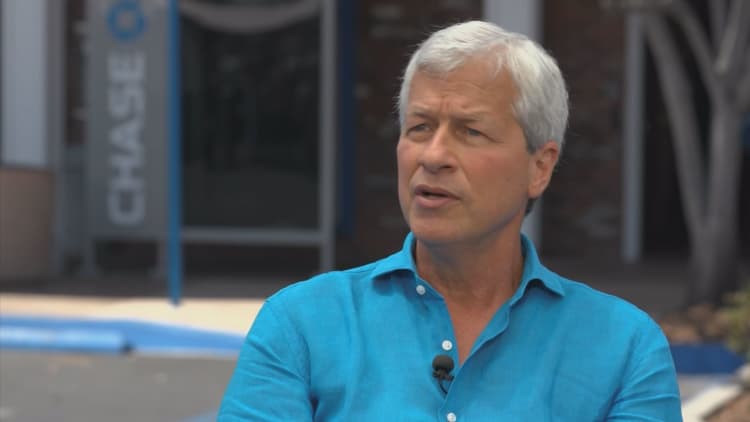J.P. Morgan Chase chief Jamie Dimon says people should prepare for U.S. yields of 5 percent, warning investors that borrowing costs throughout the economy are likely to rise beyond even his prior forecasts.
Though the bank chief previously theorized that the yield on the benchmark 10-year Treasury note could reach 4 percent in 2018, his comments Saturday at the Aspen Institute's 25th Annual Summer Celebration Gala appeared to reflect his belief in a stronger economy.
"I think rates should be 4 percent today," Dimon said. "You better be prepared to deal with rates 5 percent or higher — it's a higher probability than most people think."

The rate on the closely followed 10-year note remains below the 3 percent level despite Dimon's expectations; it fluttered above the threshold last week before slipping back to 2.95 percent by Monday morning. The yield has struggled to stay above the 3 percent level despite a U.S. unemployment rate below 4 percent, gross domestic product above 4 percent and a swell in government stimulus in the form of tax cuts and big spending.
Some economists have hypothesized that while the economic indicators may seem healthy for the moment, the long-term outlook looks less robust and that yields of longer duration reflect a more modest growth expectation.
The 10-year yield is a benchmark that influences rates for mortgages and auto loans, among other things. So, the higher the 10-year goes, the higher mortgage rates and auto loans are. If they rise, consumers may be less likely to take out those loans, thus putting some economic growth at risk.
"Our takeaway has been that a ballooning deficit at the end of a cycle (rather than to work the economy out of a recession) poses more economic downside risks than upside for Treasury yields," Ian Lyngen, head of U.S. rate strategy at BMO Capital Markets, said in an emailed statement Monday.
"Investors will grapple with the apparent disconnect between the lowest unemployment rate since 2000 ahead of the largest 10-year auction ever ($26 billion) and the inability of yields in the sector to sustainably break 3.0 percent," he added. "We'll argue there is far less inconsistency when considering the broader context of wage and consumer inflation."
Still, Dimon remains bullish on the economy and reiterated this weekend what he told CNBC in June: that "there is nothing that is a real pothole" to economic success at the moment.
"Business sentiment is almost at the highest level it's ever been, consumer sentiment is at its highest levels, markets are wide open, housing's in short supply and my guess is mortgage credit will expand a little bit," Dimon said at the time. "If you look at how the table's set, consumers are in very good shape."
"So," he concluded. "It looks pretty good."
WATCH: St. Louis Fed president: US yield curve sending a signal on rates



